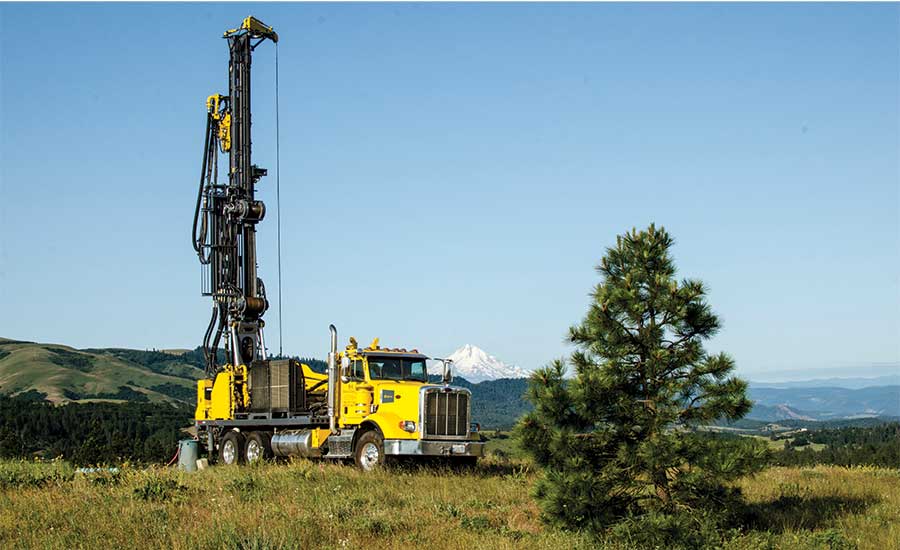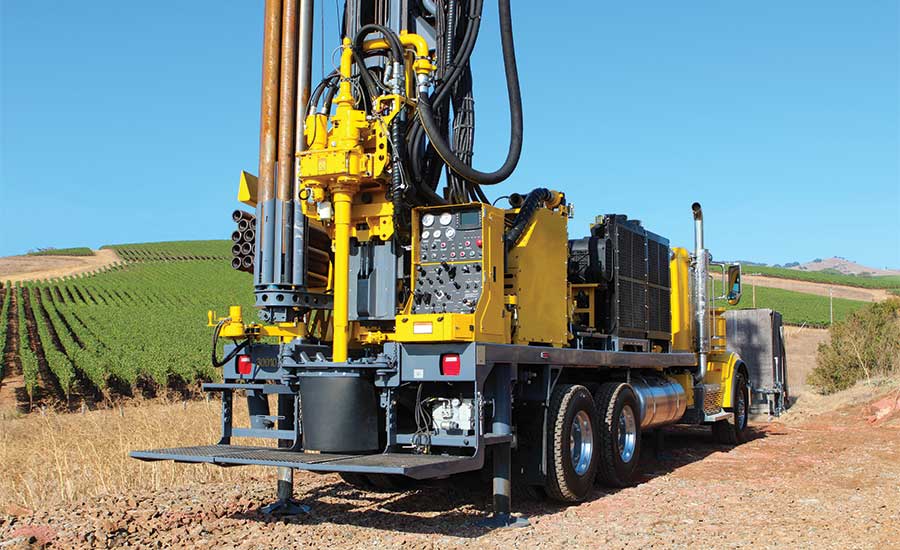Tips for Water Well Drill Rig Selection

Well specifications and drilling methods common to an area should play big roles in the decision-making process when acquiring new equipment like a drilling rig.
Source: Epiroc photos

A multipurpose rig can help contractors expand the markets they serve, going from conventional drilling one day to a flooded reverse job the next.
Source: Epiroc photos


There are many factors that go into choosing the right water well drilling rig. Ahead of the National Ground Water Association’s (NGWA’s) Groundwater Week 2018, we sat down with Cody Green, product manager of water well drills at Epiroc, to discuss drill selection tips, the latest rig innovations and the future of drilling technology.
Q. What factors should drillers consider when selecting a water well drilling rig?
A. There are three main things to talk about with your manufacturer partner: location, well specifications and drilling method.
Location encompasses the local laws and regulations required for getting equipment to and from sites, and how the well must be legally constructed. Location also includes knowing the drilling conditions below and above ground. Drillers need to know the formations they must drill through to keep the borehole open for the well. This can often present unique challenges and require multiple variations of drilling to complete a single well. Above ground, drillers need to consider altitude and extreme hot or cold weather conditions that may affect rig performance.
Well specifications is the profile of the borehole, including diameter and the total depth (TD) required to complete the well. This will influence the compressor or mud pump decisions when selecting a drill rig to ensure there is adequate bailing velocity to remove the cuttings from the hole. The depth of the hole will also determine how heavy the string weight will be once TD has been reached. The rig selected must have sufficient pullback capacity to lift and retrieve the full string weight out of the drilled hole.
The drilling method selected will be determined based off what is known from the first two categories. That information will allow you to choose different options, such as whether to use air or mud, rotary drilling or down-the-hole hammer (DTH), cable tool drilling or hydraulic rotary. It also feeds into other drilling decisions, including how to make up the drill string and the type of bits used.
“Having a rig that is adaptable to handle a variety of work can help drillers expand business or pick up extra work if there is a slowdown in primary business activity.”
– Cody Green
Once drillers have an understanding of the vast requirements the rig will face in the application, they can select a rig that will allow for flexibility.
Q. What are some common oversights customers make when choosing a rig?
A. Drillers sometimes overlook the need to plan for future opportunities. Having a rig that is adaptable to handle a variety of work can help drillers expand business or pick up extra work if there is a slowdown in primary business activity. Additionally, drillers should remember to look at what type and level of support the manufacturer offers. Another key item to prioritize is the resale value of the rig.
Q. What are the industry’s latest and most impactful rig design and technology innovations?
A. As we advance toward automated options and increased technology, we can now provide a safer environment and increased rig efficiencies. For example, the Epiroc Diamondback offers a hands-free auto rod handler for loading and unloading pipe. We also have an “iron roughneck” option for hands-free breakout on pipe joints. This keeps the operator and helper from directly putting hands in harm’s way, and allows them to work smarter and more efficiently. The Diamondback also has a large viewing screen on the console to provide live diagnostics and troubleshooting information, which can save valuable time and money for the end user.
Q. What is the potential business impact of owning a versatile drill that can perform multiple drilling methods?
A. A multipurpose rig can expand the markets a driller can participate in. It allows drillers to perform conventional drilling one day and do a flooded reverse or RC/coring job the next. It can also help reduce total cost of ownership by having one rig that can do the job of two. Instead of having one RC rig to start a hole and then have to tear it down to bring in a second coring rig to finish the hole, a driller can keep the multipurpose rig over the hole and complete the entire hole by switching between RC and coring modes.
Q. What are some new rig features and benefits that drillers should expect in the near future?
A. New technologies and safety-driven regulations are moving the market toward increased automation. Epiroc has already taken a leadership role in automation with our mining rigs. When the market developed a need for fully autonomous mining rigs, Epiroc became the first to offer unmanned blasthole rigs controllable from over 800 miles away. The driller can monitor multiple rigs at once while they run fully autonomously: drilling, setting up, and tramming from hole to hole using GPS and obstacle detection to navigate with no operator on board. Epiroc is ready to push and lead in water well rig automation as well.
Looking for a reprint of this article?
From high-res PDFs to custom plaques, order your copy today!










